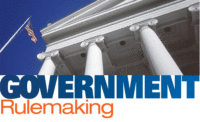 OSHA’s final rule requiring employers to notify the agency about workplace fatalities and severe injuries will be joined by other federal regulatory activity in 2015, according to Washington observers, who expect a number of regulations to be finalized during the last two years of the Obama administration.
OSHA’s final rule requiring employers to notify the agency about workplace fatalities and severe injuries will be joined by other federal regulatory activity in 2015, according to Washington observers, who expect a number of regulations to be finalized during the last two years of the Obama administration.
Among the regulatory actions on federal agencies’ to-do lists:
Recordkeeping, Reporting Rules. Publication of a final rule requiring electronic filing of work-related injuries and illnesses is scheduled for August 2015. “An updated and modernized reporting system would enable a more efficient and timely collection of data, and would improve the accuracy and availability of the relevant records and statistics,” the agency said.
OSHA is also proposing to amend its recordkeeping regulations to clarify that the duty to make and maintain accurate records of occupational injuries and illnesses is an ongoing obligation.
Silica Proposal. OSHA's proposed rule to workplace exposure to respirable crystalline silica was identified as a top priority for 2015 in the seminannual regulatory agenda it released last year.
The agency wants to reduce the permissible exposure limit for quartz, the most common form of crystalline silica, to 50 micrograms per cubic meter of air from roughly 100 micrograms in general industry and from 250 micrograms in construction and shipyards. The proposal would also update requirements for exposure assessment and control, respiratory protection, medical surveillance, hazard communication, and recordkeeping—to match the lowered limit. OSHA estimates that the change rule would save approximately 700 lives and prevent 1,600 new cases of silicosis a year. Using OSHA information, the Mine Safety and Health Administration plans its own regulatory action related to silica exposure in mines.
Confined Spaces, Slip and Fall Prevention. OSHA’s final rule on confined spaces in construction is scheduled for March 2015. The proposed rule, published in 2007, tailored provisions originally found in the agency’s confined spaces for general industry rule to construction work.
In June 2015, OSHA plans on issuing a final rule addressing slip, trip and fall hazards and establishing requirements for personal fall protection systems.
Beryllium. A proposed rule on occupational exposure to beryllium is may be published this month. While it is expected to lower the permissible exposure limit for the toxic metal, it may also include provisions on extending medical surveillance and enhancing exposure assessment and control methods.
Crane Operator Certification. OSHA also plans to propose amendments to its rule on cranes and derricks in construction in January 2015 that would include corrections, clarifications and definitions omitted in the 2010 final rule. A proposed rule that will be issued in March of 2015 will identify criteria for employers to follow to ensure crane operators are “completely qualified” to operate cranes safely on construction worksites. The rule will also clarify issues surrounding operator certification, including the type and capacity requirement found in the 2010 rule.
The deadline for crane operator certification was extended to Nov. 10, 2017.
Fit testing for respirators. A proposed rule incorporating new fit-test protocols into OSHA’s respiratory protection standard is also planned for March 2015, according to the agenda. OSHA has received a submission to consider three new fit-test protocols used to select respirators.
Infectious disease protection for workers. Infectious disease protocols in health care and other high-risk environments are in for an upgrade. Currently, the process for reviewing the potential impact on small businesses is underway. Findings from a review of the agency’s bloodborne pathogens standard are expected in May 2015.
What won’t happen in 2015
OSHA’s efforts to move rulemaking on combustible dust and backover accidents forward have been rescheduled for 2016. In the case of the combustible dust rule, the agency may be waiting for the National Fire Protection Association (NFPA) to finish updating its consensus standard.


